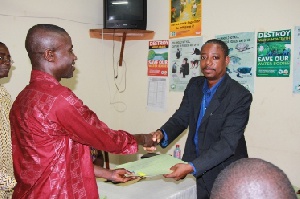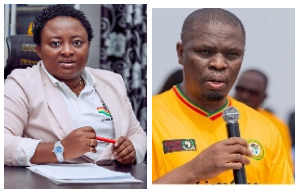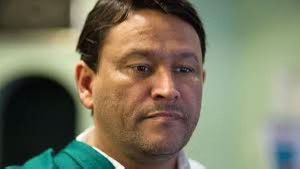The Community Development and Knowledge Management for the Satoyama Initiative (COMDEKS) has given US$253,000 to six cluster communities of 36 in the Weto landscape of the Volta Region to conserve and sustain biodiversity.
Miss Abibata Mahama, Vice Chairperson of Small Grants Program, who made the presentation on Thursday in Accra, said the purpose of the grant was to build the resilience of the local communities to realize the Satoyama vision for socio-ecological production landscapes through adaptive collaborative management.
The grant is provided by Japan Biodiversity Fund, and implement by United Nations Development Fund through the Global Environment Facility Small Grants Program, Ghana.
The selected clusters are Sanga-Bame, Bame-Saviefe, Peki-Todome, Kpeve-Woadze, Have-Jordanu and Nyagbo-Logba.
Miss Mahama said the selected communities were being supported with direct funds as grants to enable the people to withstand, adapt and quickly recover from stresses and shocks such as drought, wildfires, violence, conflict and natural disaster that often occurred within the range.
She said the landscape was a biodiversity hot-spot of global importance which had the biggest potential for climate resilience farming systems and tourism in Ghana.
“The landscape is well endowed with diversified natural resources in the form of high biodiversity, hydrological systems, rich soils, stony features and conducive climate, all of which form a strong based for economic activities and sustainable development,” she said.
Miss Mahama said the main environmental challenges confronting the landscape include increasing habitat destruction, unsustainable farming practices, inadequate livelihood support systems and weak institutional capacity to support conservation and production.
She said the result of these challenges had been increasing loss of biodiversity, land degradation and widespread poverty.
The use of resources in the landscape are unsustainable with increasing application of agrochemicals, cultivation of lands along the water courses, streams drying up, reduction in soil fertility, loss of flora and fauna, and increasing erosion.
Miss Mahama expressed the hope that the program would ensure a thriving socio-economic production landscape where the local communities are actively involved in the sustainable management and utilization of the natural resources for increased production, the restoration of biodiversity, wealth creation and continuous flow of ecosystem services.
Mr George Ortsin, Country Program Coordinator, United Nations Development Program (UNDP), Global Environment Facility Small Grants Program, told the beneficiary communities to apply the facility judiciously to prevent biodiversity loss and to improve the wellbeing of the people.
Mr Ortsin said there would be follow-ups to monitor how the grant was being applied, adding, “you are required to write one page report in every month on the use of the grant”.
He said the main areas covering the application of the grant would include production, capacity building of farmers, livelihood support, environmental instances and institutional support.
Mr Paul Kpai, representative of a recipient community, thanked COMDEKS and assured the donor that the grant would be put to maximum use so that people would feel comfortable.
Regional News of Friday, 14 December 2012
Source: GNA

















